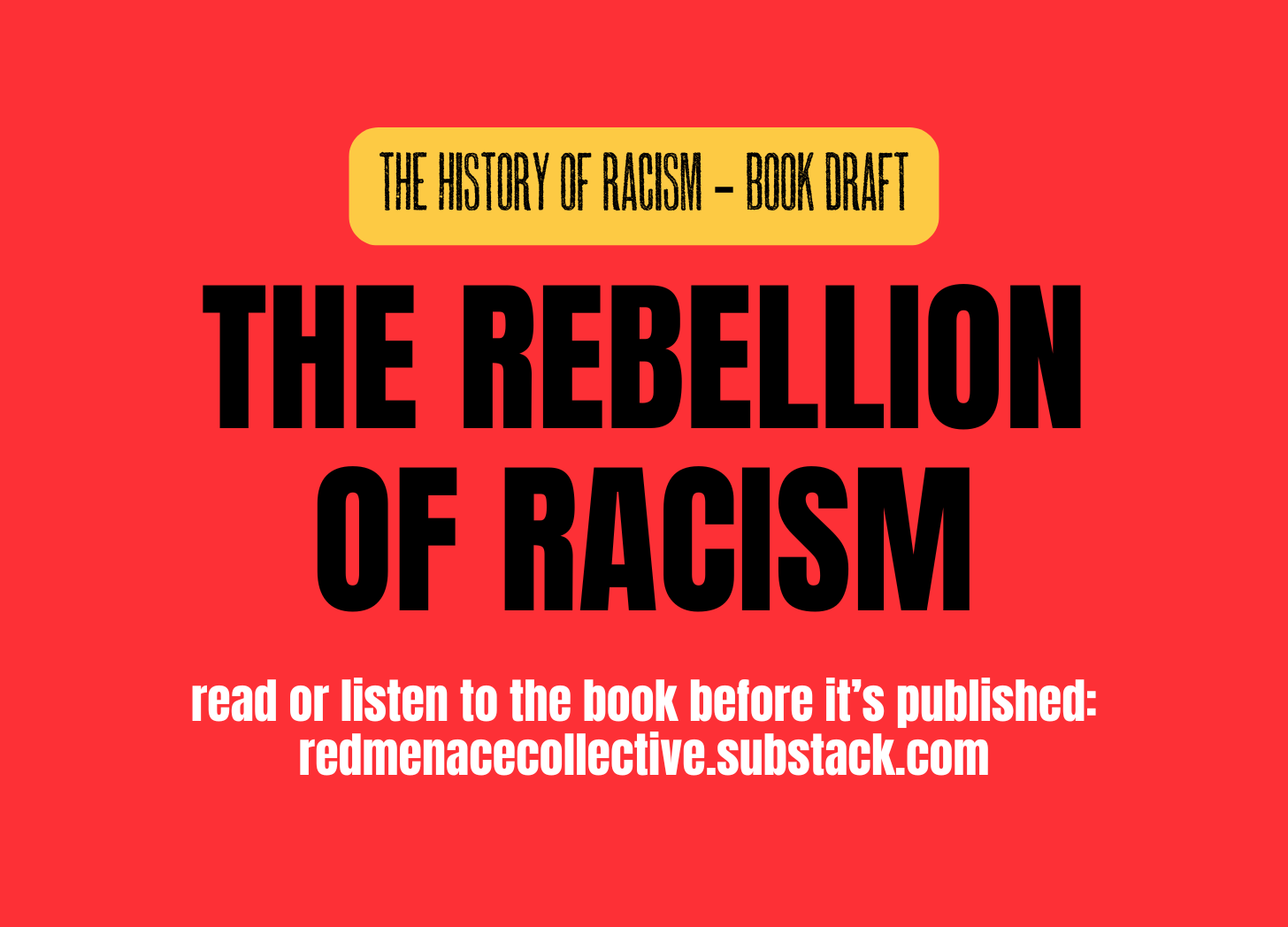The Rebellion of Racism
A little side project exploring the origin and evolution of the term "racism" from inception to modern day.
Dive into the origins and evolution of one of the most charged words in history—racism. This side project explores how the term was born, its transformation through ideological and political struggles, and its journey from a concept critiquing oppression to a weapon in modern-day cultural battles, unpacking how "racism" became a driver for leftist ideologies and societal shifts. It's a bold, unapologetic look at the word that reshaped public discourse, from inception to now.
This project will become a short book when it’s done.
Subscribers to The Red Menace Collective will receive a free digital copy of the book and be able to follow along with draft chapters as the book is written.
This is the eighth chapter in the book, examining the riotous years of 2020-2024.
The Rebellion of Racism
The years 2020 to 2024 will be remembered as a moment of profound transformation—a period when racism mutated from a social problem into a comprehensive ideological framework that infiltrated every aspect of American life. What unfolded was nothing short of an attempted cultural revolution, complete with its own theology, enforcement mechanisms, and total institutional capture.
The George Floyd Rebellion
On a humid afternoon in Minneapolis, America stood on the precipice of transformation. None of the pedestrians hurrying past Cup Foods on Chicago Avenue could have known that the next nine minutes and twenty-nine seconds would reshape the nation's understanding of racism itself.
As the nation struggled with the isolation of COVID-19 lockdowns, the catalyst came in the form of a cell phone video. The footage showed Minneapolis police officer Derek Chauvin kneeling on George Floyd's neck, an image that would soon be seared into the collective consciousness of a nation. Floyd's final words—"I can't breathe"—would echo far beyond that Minneapolis street corner, becoming a rallying cry that would reverberate across the globe.
The response was immediate and unprecedented. Within hours, Minneapolis erupted. The city's streets, still eerily quiet from COVID-19 lockdowns, suddenly filled with protesters. By May 26, the air thick with tear gas and tension, demonstrators surrounded the police precinct where Chauvin worked. Two days later, in a moment that would mark a point of no return, flames engulfed the Third Precinct police station—a visceral symbol of institutional power reduced to ash and rubble.
The flames that consumed Minneapolis's Third Precinct were just the beginning of a nationwide conflagration. Like a spark in dry timber, the protests spread. Portland's nights were illuminated by the glow of constant demonstrations, a resistance that would persist for one hundred consecutive evenings. In Seattle, protesters carved out their own autonomous zone—the CHAZ—a several-block area that became a living experiment in community control. Across the nation, statues toppled like dominoes, each crash of bronze and marble marking another blow against the old order.
According to the New York Times analysis of four polling organizations and academic research, an estimated 15 to 26 million people participated in the demonstrations, making it potentially the largest protest movement in global history. International demonstrations spread from Australia to the United Kingdom, transforming a local incident into a global statement about racial injustice.
According to the Armed Conflict Location & Event Data Project (ACLED) report released in September 2020, at least 25 people were killed during protests between May 26 and August 22, 2020. According to Property Claim Services, a unit of Verisk Analytics that tracks insurance claims, over $2 billion in property damage occurred during the civil unrest of 2020, making it one of the costliest civil disorders in U.S. history. Entire city blocks were transformed into battlegrounds of social upheaval.
In August 2020, the intellectual ammunition for the uprising arrived. Vicky Osterweil, a white transgender writer and cultural critic, penned "In Defense of Looting: A Radical History of Uprising," presenting a provocative analysis of looting as a form of political resistance. Osterweil argued that property destruction was not mindless violence, but a revolutionary strategy challenging capitalist and racist economic structures:
"Looting strikes at the heart of property, of whiteness, of the police. It provides people with an imaginative sense of freedom from the world of systematic violence and oppression."
The book became a lightning rod for debates about protest and racial justice. While mainstream media and conservative commentators denounced it as dangerous, some radical activists and scholars praised it as a bold theoretical intervention that contextualized the uprisings.
Keeanga-Yamahtta Taylor, a Black Marxist scholar, also framed the uprising in explicitly revolutionary terms:
"This is not merely a protest, but an uprising against the entire system of racial capitalism. We are witnessing the birth of a new political consciousness."
The protests forced unprecedented institutional changes in line with leftist demands. Police departments across the country began reviewing use-of-force policies. Cities like Minneapolis seriously discussed dismantling their existing police departments. Universities implemented mandatory diversity and anti-racism training. Corporations created new diversity, equity, and inclusion positions.
The uprising occurred against the backdrop of the COVID-19 pandemic, which the activists argued disproportionately impacted Black and Brown communities. This context added depth to the protesters' demands, highlighting systemic inequities in healthcare, economic opportunity, and social support. The goal, it seems, was always about reforming the system rather than addressing individual prejudice. Racism was declared a public health crisis to allow the protests to continue while average people were stuck socially distancing.
Continue below the paywall to access the full chapter.
Keep reading with a 7-day free trial
Subscribe to The Red Menace Collective to keep reading this post and get 7 days of free access to the full post archives.





